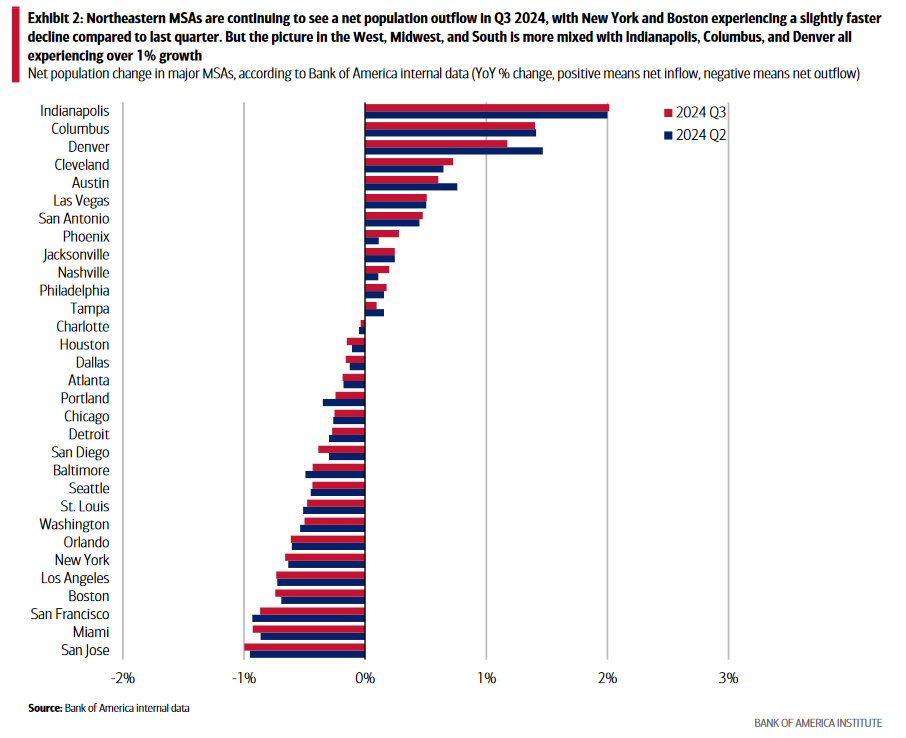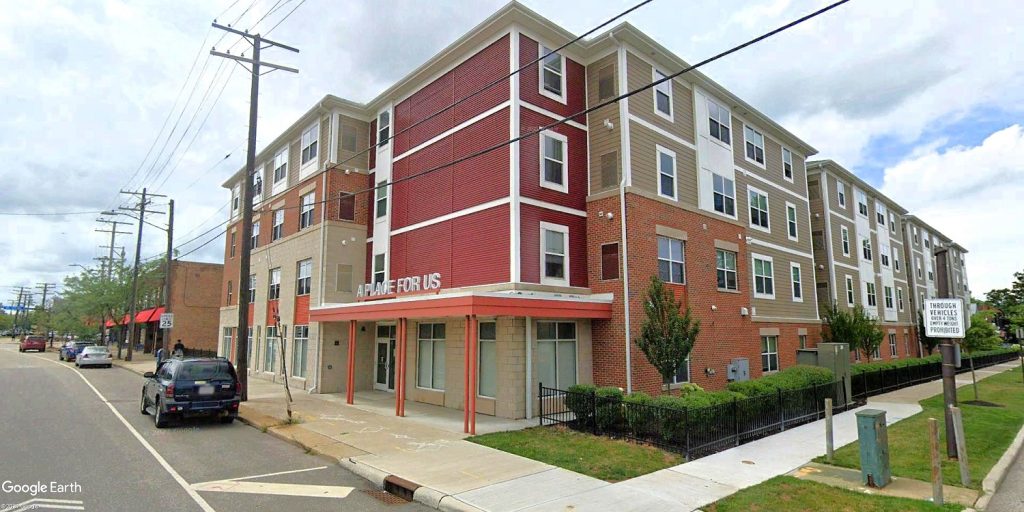Affordability, amenities continue to be a draw
Greater Cleveland ranked fourth on the list of global financial institution Bank of America’s (BofA) latest rankings of where people are moving. That data shows Americans are continuing a pandemic-induced flight to affordability, without sacrificing amenities, in choosing where they want to live.
“According to Bank of America internal data and continuing a trend that started at the beginning of the pandemic, people are moving from higher priced areas in the West and the Northeast, to relatively less expensive cities in the South and Midwest,” the BofA report noted. “Indianapolis, Columbus, Cleveland and Austin top of our list of top domestic migration destinations.”
Ranked ahead of Greater Cleveland were the metro areas of Indianapolis, Columbus and Denver, in terms of year-over-year changes in net migration in the third quarter of 2024 vs. the third quarter of 2023. Although Greater Cleveland’s gains were small, barely nudging over a 0.5 percent increase, it was enough to put it ahead of the likes of Austin, Las Vegas, San Antonio, Phoenix, Jacksonville and Nashville. Cleveland also has been seeing “brain gain” lately, too.
“In the Northeast, Boston and New York are experiencing a slightly faster decline in population growth compared to last quarter, while in the West, Midwest and South, the data remain more mixed,” the BofA report said. The report was released on Oct. 31.
Greater Cleveland also was seeing a growing net inflow — more people moving in than moving out — over a period of time. For example, the rate of positive net-migration was stronger in the third quarter of 2024 than it was in the second quarter. Yet the second quarter 2024 data was still strong enough to rank our metro area fifth in the national rankings.
This continues a series of reports, including from BofA, showing increased net migration to Greater Cleveland. BofA is one of the nation’s Big Four banking institutions, serving more than 10 percent of all bank deposits of the United States. So its data, based on where bank deposits are located, or in this case relocated, can be an accurate source of information.
BofA touted its data over the Census’ because theirs offers “near real-time” estimates of migration flows among the nation’s largest Census-designated metropolitan statistical areas (MSAs). The Cleveland MSA includes Ashtabula, Cuyahoga, Geauga, Lake, Lorain and Medina counties. An MSA differs from the Census’ combined statistical areas which, for Greater Cleveland, includes the Akron and Canton areas with a total population of 3.6 million people.
While the timeliness of the data may offer value, the comparisons are incomplete. Several important mid-size cities are missing from the list altogether. Excluded due to an apparent lack of BofA market share are Cincinnati, Kansas City, Pittsburgh and Salt Lake City, even though BofA has a market presence in each of the metro areas.
And the BofA said that, while people are looking for more affordability, they are increasingly searching for and finding it within their own metro areas. The number of people moving to different states or metros has decreased 7 percent year-over-year.
“People relocating within the same MSA are making up a higher share of total movers, up from the pandemic low seen in Q3 2021,” the report added.
The reasons are basic. When changing cities, there are additional moving and transportation costs as well as other expenses including new supplies, furniture and appliances. There’s also the ‘risk’ of moving to a new city, given people are often taking on a new job, as well as a new area, and leaving behind their previous familiar location.
This follows some interesting data shared by the U.S. Census’ American Community Survey (ACS) in September. Shared was the city of Cleveland’s 2023 population data which was estimated at 362,670. That’s 1,016 more than the the 361,654 residents estimated by the ACS in 2022 — a population increase of 0.28 percent.
Of course, one year does not make a trend, but it does show that the 70-year population slide in Cleveland appears to have slowed if not stopped. Prior year’s data shows year-over-year population declines as small as 0.07 percent and as large as 3.4 percent.
On the other hand, Greater Cleveland’s population slide stopped in 2020. The ACS also concurs with the BofA data that Greater Cleveland’s population has been growing, albeit slightly, since 2010.
END






